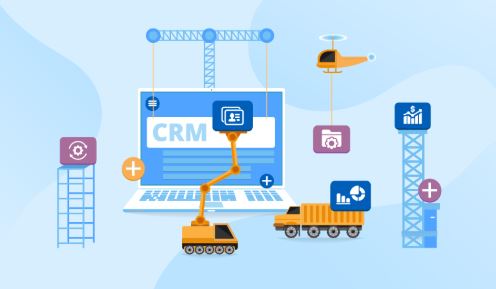How Construction Drafting, Shop Drawings, and BIM Modeling Services Are Revolutionizing Modern Building Projects
The construction industry is rapidly evolving, driven by technological advancements that streamline processes and enhance accuracy. Among the most transformative innovations are construction drafting services, shop drawings services, and BIM modeling services. These services are not just tools—they’re catalysts for efficiency, quality control, and collaboration across the building lifecycle.
In this guest post, we will explore how these essential services work together to revolutionize construction projects, ensuring smooth execution, cost efficiency, and top-notch quality.
The Foundation: Construction Drafting Services
At the core of every successful construction project lies a solid plan. This is where construction drafting services come in. These services provide the technical blueprints that guide the project from concept to completion. Drafting involves creating precise drawings that showcase the building’s dimensions, materials, and structural layout.
Traditionally, drafts were drawn by hand, but the shift to computer-aided design (CAD) systems has significantly enhanced the process. CAD drafting allows for faster, more accurate, and modifiable designs that can evolve as the project progresses. In addition to offering precision, CAD makes collaboration easier by allowing multiple team members to review and contribute to the design in real time.
Why Construction Drafting Services Matter:
- Precision and Accuracy: Modern CAD technology ensures the highest levels of accuracy, reducing the likelihood of errors during construction.
- Adaptability: Drafts can be easily updated to reflect changes in design, saving time and avoiding the need for a full redesign.
- Clear Communication: Detailed drafts provide a universal language for architects, engineers, and contractors, ensuring all stakeholders understand the project’s specifications.
- Reduced Risk: Accurate drafting minimizes the risk of errors that can lead to costly delays or rework.
By providing a detailed roadmap for construction teams, drafting services ensure that every aspect of the project is planned out before work begins, reducing uncertainty and streamlining execution.
Shop Drawings Services: The Next Level of Detail
While construction drafting focuses on the overall design, shop drawings services take the process to a more detailed level. Shop drawings offer precise instructions for the fabrication and installation of specific components of a building, such as structural steel, plumbing systems, and custom features like windows or millwork.
Shop drawings are essential for ensuring that individual elements of the project fit together perfectly. They are often created by subcontractors or manufacturers to provide precise instructions for how components should be assembled, ensuring that they align with the overall design.
Key Benefits of Shop Drawings Services:
- Component Precision: Shop drawings offer detailed specifications on materials, dimensions, and assembly processes, reducing errors during fabrication.
- Improved Coordination: With multiple subcontractors working on different components of a project, shop drawings ensure that all parts integrate seamlessly, preventing conflicts between systems.
- Approval and Quality Control: Shop drawings are reviewed and approved by architects and engineers before fabrication begins, ensuring that the project meets design standards.
- Time and Cost Savings: By preventing on-site issues and reducing rework, shop drawings help keep the project on schedule and within budget.
In essence, shop drawings bridge the gap between conceptual design and practical execution, making sure that every component is constructed with precision and fits perfectly into the overall project.
BIM Modeling Services: A New Era in Construction Management
BIM modeling services (Building Information Modeling) have transformed how construction projects are visualized, managed, and executed. Unlike traditional drafting, BIM creates interactive 3D models that contain detailed information about the building’s physical and functional characteristics. More than just a design tool, BIM is an integrated platform that connects all aspects of a project, from design to construction and even future facility management.
BIM models are interactive and collaborative, enabling architects, engineers, contractors, and project owners to work from the same digital model. This centralized approach streamlines communication, reduces errors, and enhances overall project coordination.
The Power of BIM Modeling Services:
- Enhanced Visualization: BIM provides a 3D representation of the entire building, allowing stakeholders to see how different systems will interact before construction begins.
- Clash Detection: BIM automatically detects clashes between systems (e.g., plumbing and electrical) that could cause issues during construction, allowing for adjustments before work starts.
- Real-Time Collaboration: BIM is a shared platform where all team members can access the model, make updates, and ensure that everyone is aligned.
- Efficiency in Scheduling: BIM integrates scheduling data, helping teams manage project timelines and reducing the risk of delays.
- Lifecycle Management: BIM continues to add value long after construction is complete by providing detailed data for ongoing building maintenance and facility management.
BIM modeling doesn’t just improve the construction phase—it enhances the entire building lifecycle. From initial design to post-construction management, BIM offers a data-driven approach that improves decision-making and maximizes long-term building performance.
How These Services Work Together
The integration of construction drafting, shop drawings, and BIM modeling services provides a comprehensive approach to modern construction projects. Each service plays a distinct role, but when used together, they create a streamlined, efficient workflow that benefits everyone involved in the project.
For instance, a construction project might begin with CAD-based construction drafts to outline the basic design and structure. As the project progresses, shop drawings are created to provide detailed instructions for the fabrication and installation of specific components, ensuring they fit precisely into the overall design. Throughout the process, BIM modeling brings everything together in a 3D environment, offering real-time updates and enhanced collaboration among team members.
This integrated approach has several key advantages:
- Reduced Errors and Rework: Accurate drafts and shop drawings reduce the chances of mistakes during construction, while BIM’s clash detection capabilities prevent conflicts between systems.
- Improved Communication: With everyone working from the same detailed plans and models, miscommunications are minimized, and collaboration is enhanced.
- Time and Cost Efficiency: By catching errors early and streamlining the workflow, these services help keep the project on schedule and within budget.
- Better Project Outcomes: Ultimately, the combination of drafting, shop drawings, and BIM ensures higher-quality construction, better project management, and greater satisfaction for all stakeholders.
Conclusion
In today’s construction industry, construction drafting services, shop drawings services, and BIM modeling services are indispensable tools for delivering successful projects. These services not only improve accuracy and coordination but also drive efficiency and cost savings throughout the building process.
By integrating these technologies, construction professionals can streamline workflows, reduce errors, and deliver higher-quality projects on time and within budget. As the industry continues to evolve, these services will play an even more critical role in shaping the future of construction.
For any construction project, whether large or small, embracing these modern tools and services is the key to staying competitive, delivering value to clients, and ensuring successful outcomes in an increasingly complex industry.



